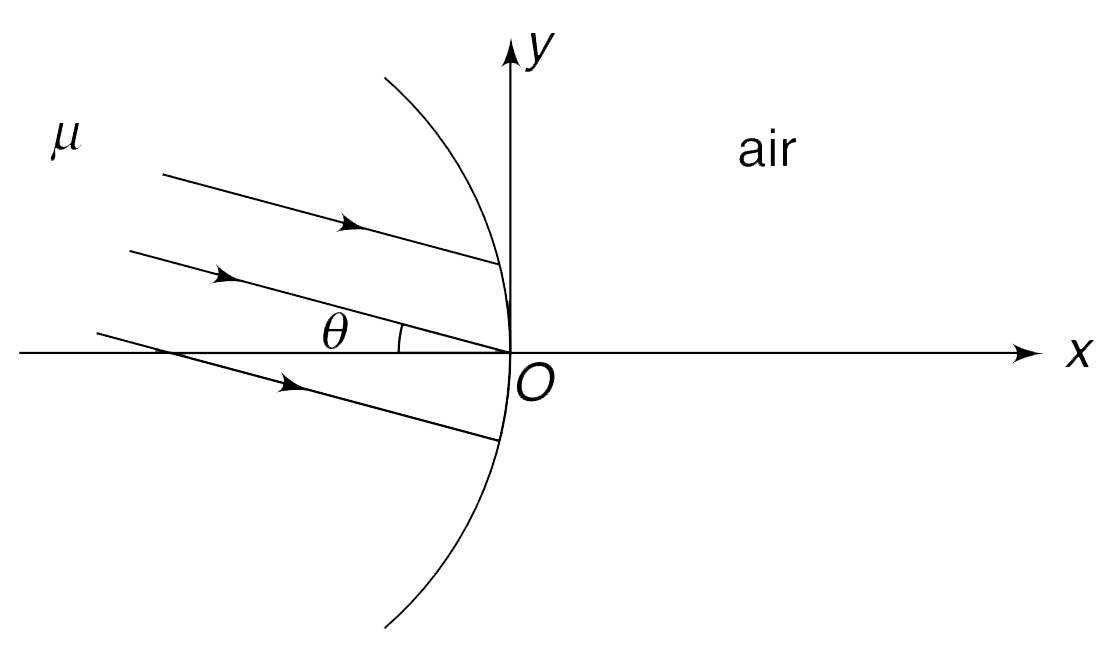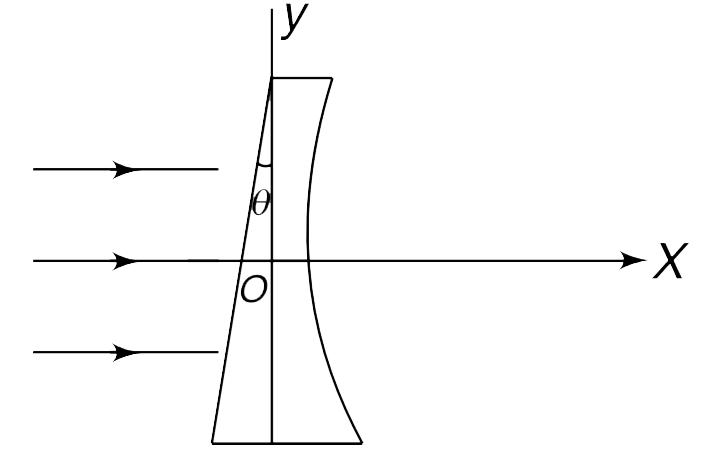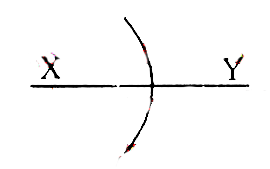A spherical surface of radius R separates air from a medium of refractive index . Parallel beam of light is incident, from medium side, making a small angle with the principal axis of the spherical surface. Find the co-ordinates of the point where the rays will focus in air.

The correct Answer is:
Step by step video, text & image solution for A spherical surface of radius R separates air from a medium of refractive index mu. Parallel beam of light is incident, from medium side, making a small angle theta with the principal axis of the spherical surface. Find the co-ordinates of the point where the rays will focus in air. by Physics experts to help you in doubts & scoring excellent marks in Class 12 exams.
Updated on:21/07/2023Topper's Solved these Questions
- GEOMETRICAL OPTICSBOOK - ARIHANTCHAPTER - GEOMETRICAL OPTICSEXERCISE - Level 3
9 Videos
- GEOMETRICAL OPTICSBOOK - ARIHANTCHAPTER - GEOMETRICAL OPTICSEXERCISE - Level 3
9 Videos
- ELECTROSTATICSBOOK - ARIHANTCHAPTER - ELECTROSTATICSEXERCISE - Level 3
59 Videos
- MAGNETIC EFFECT OF CURRENTBOOK - ARIHANTCHAPTER - MAGNETIC EFFECT OF CURRENTEXERCISE - Magnetic effect of Current
45 Videos
Similar Questions
Due to manufacturing defect, the plane surface of a thin plano-concave lens has been made tilted at a small angle q outwards from its usual place. The spherical surface has radius of curvature R and refractive index of the material of the lens is μ. A parallel beam of light is incident as shown. In the co-ordinate system shown find the co-ordinates of the point where the rays will focus or appear to be diverging from.

View SolutionA plane surface separates a denser medium of refractive index 1.5 from air. A plane wavefront travelling in air is incident on the interface at an angle of 30∘. What will be the angle of refraction ?
View Solution
Knowledge Check
A concave spherical refractive surface with radius R separates a medium of refractive index 5/2 from air. As an object is approaching the surface from far away from the surface along the central axis, its image
Aalways remains realBalways remains virtualCchanges from real to virtual at a distance 2R/3 from the surfaceDchanges from virtual to real at a distance 2R/3 from the surfaceA convex spherical refracting surface with radius R separates a medium having refractive index 5/2 from air. As an object is moved towards the surface from far away from the surface along the principle axis, its image
Achanges from real to virtual when it is at a distance R from the surfaceBchanges from virtual to real when it is at a distance R from the surfaceCchanges from real to virtual when it is at a distance 2R/3 from the surfaceDchanges from virtual to real when it is at a distance 2R/3 from the surfaceWhen a ray of light passes from air medium to denser medium then the refractive index is
Arelative refractive indexBabsolute refractive indexCdispersonDnone of these
Light enters from vacuum to a medium of refractive index μ. If angle of incidence is double of angle of refraction, find angle of refraction.
View SolutionFocal length of a thin lens in air, is 10 cm. Now medium on one side of the lens is replaced by a medium of refractive index μ=2. The radius of curvature of surface of leng, in contact with the medium, is 20 cm. Find the point on principal axis where parallel rays incident on lens from air parallel to axis will converge.

View SolutionA ray of light travelling in air is incident at 45∘ on a medium of refractive index √2. The angle of refractive in the medium is
View SolutionA concave spherical surface of radius of curvature 10 cm separates two medium x & y of refractive index 4/3 & 3/2 respectively. If the object is placed along principal axis in medium X then

View SolutionA ray of light is incident on a medium of refractive index √2 at an angle of incidence of 45∘. The ratio of the width of the incident beam in air to that of the refracted beam in the medium is
View Solution
